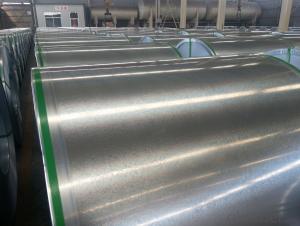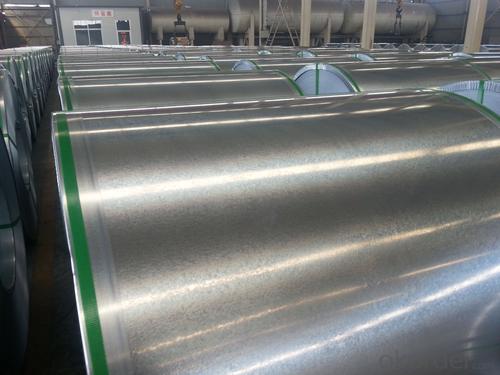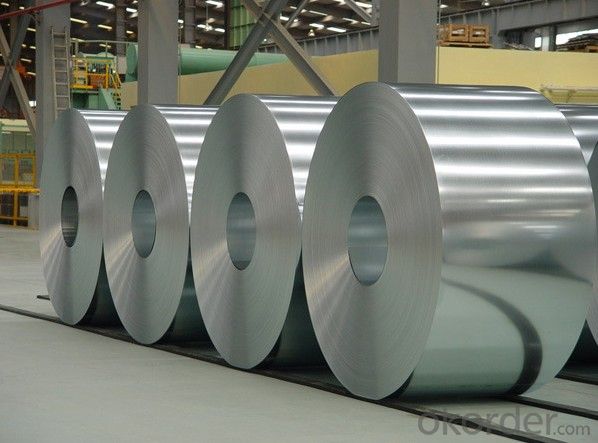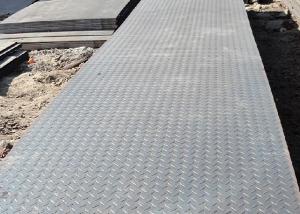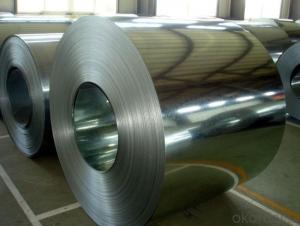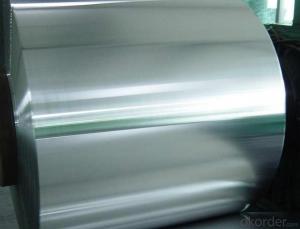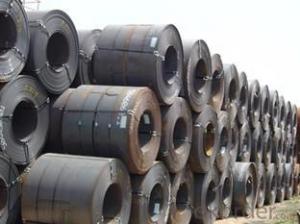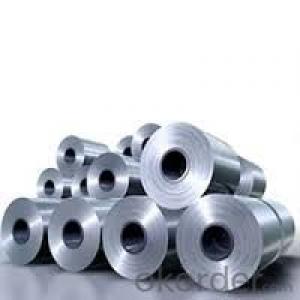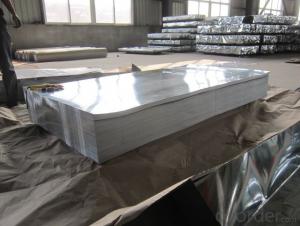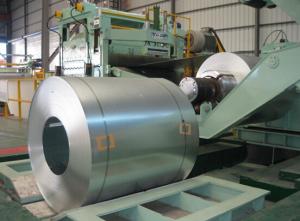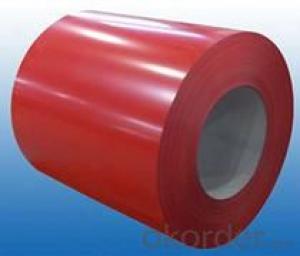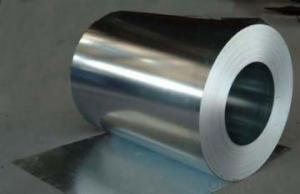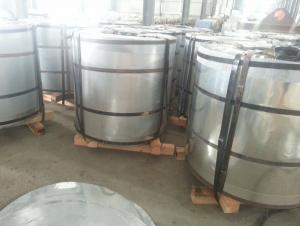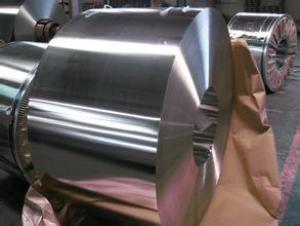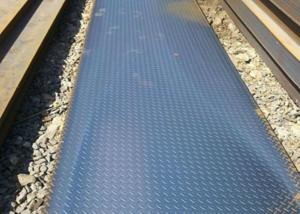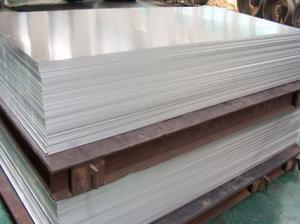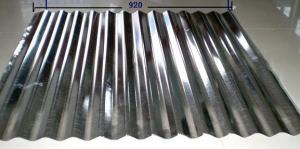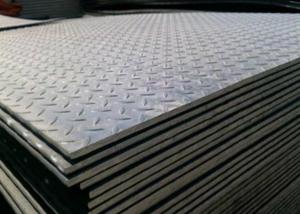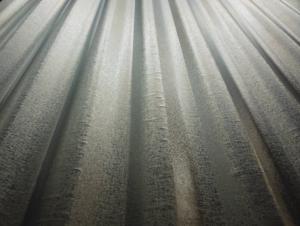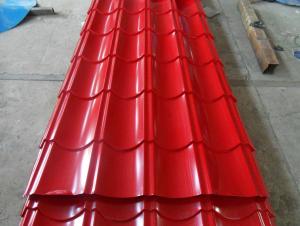Galvanzied Steel Coil
- Loading Port:
- China Main Port
- Payment Terms:
- TT OR LC
- Min Order Qty:
- -
- Supply Capability:
- -
OKorder Service Pledge
OKorder Financial Service
You Might Also Like
Commodity | Hot dip galvanized steel coil and sheet |
Technical Standard: | JIS 3302 / ASTM A653 / EN10143 |
Grade | DX51D / DX52D/ DX53D/ S250,280,320GD |
Types: | Commercial / Drawing / Deep Drawing / Structural quality |
Width | 500/650/726/820/914/1000/1200/1219/1220/1250mm |
Thickness | 0.12-2.8mm |
Type of coating: | Galvanized |
Zinc coating | Z30-275g/m2 |
Surface Treatment | Chromed / Skin-pass/ Oiled/Slightly Oiled/ Dry/ Anti-fingerprint |
Surface structure: | Zero spangle / minimized spangle / regular spangle/ big spangle |
ID coil | 508mm or 610mm |
Coil weight | 3-8 MT per coil |
Package: | Properly packed for ocean freight exportation in 20''containers |
Application: | Industrial panels, roofing and siding for painting |
Price terms | FOB,CFR,CIF |
Payment terms | T/T or L/C |
Delivery time | Within 30 days |
Remarks | Insurance is all risks |
MTC will be handed on with shipping documents | |
We accept the third party certification test,such as SGS/BV |
Technical data :
Hot dipped galvanized coil Technical Data
Chemical Composition | ||||||
GRADE | C | Si | Mn | P | S | Ti |
SGCC/DX51D+Z | ≤0.10 | ≤0.50 | ≤0.60 | ≤0.10 | ≤0.030 | ≤0.020 |
DX52D+Z | ≤0.10 | ≤0.50 | ≤0.60 | ≤0.10 | ≤0.030 | ≤0.020 |
SGCD/DX53D+Z | ≤0.10 | ≤0.30 | ≤0.50 | ≤0.05 | ≤0.030 | ≤0.020 |
SGCE/DX54D+Z | ≤0.10 | ≤0.30 | ≤0.30 | ≤0.03 | ≤0.020 | ≤0.020 |
DX56D+Z | ≤0.10 | ≤0.30 | ≤0.30 | ≤0.03 | ≤0.020 | ≤0.020 |
Structural | ≤0.20 | ≤0.60 | ≤1.70 | ≤0.10 | ≤0.045 | |
|
|
|
|
|
| |
Hot dipped galvanized steel coil Mechanical Properties | |||
GRADE | Yield Strength MPa | Tensile Strength MPa | Elongation % |
SGCC(DX51D+Z) | ≥205 | ≥270 | - |
SGCD(DX53D+Z) | - | ≥270 | 38 |
SGCE(DX54D+Z) | - | ≥270 | 40 |
DX56D+Z | - | ≥270 | 42 |
- Q: What can be painted on galvanized steel sheet?
- Zinc coating in the atmospheric environment after exposure, the surface will form a zinc salt (also known as white rust), before coating the paint, these zinc salts must be completely eliminated. The most effective treatment is the light sweep sand blasting method; if it is impossible to use sandblasting, you can use wire brushes or steel wool and full fresh water to remove zinc salts by mechanical cleaning and washing.
- Q: What is the difference between hot dipped galvanized and electro galvanized steel sheets?
- Hot dipped galvanized and electro galvanized steel sheets are both types of galvanized steel, but they differ in the method of application and the resulting characteristics of the coating. Hot dipped galvanized steel sheets are made by immersing the steel into a molten zinc bath. This process creates a thick, durable coating that provides excellent corrosion protection. The steel is completely coated in zinc, both on the surface and on the edges, ensuring complete coverage and protection against rust and other forms of degradation. The coating thickness can vary depending on the application and the required level of protection. On the other hand, electro galvanized steel sheets are produced by electroplating steel with a thin layer of zinc. The steel is first cleaned and treated with an acid solution to remove impurities and improve adhesion. Then, it is immersed in a zinc electrolyte solution, and an electric current is passed through the bath, causing the zinc ions to bond with the steel surface. This process results in a much thinner coating compared to hot dipped galvanized steel. Due to the thinner coating, electro galvanized steel sheets provide less corrosion protection than hot dipped galvanized steel sheets. They are more suitable for indoor applications or environments with less exposure to harsh conditions. However, electro galvanized steel sheets offer other advantages such as a smoother and more uniform appearance, making them popular for applications where aesthetics are important, such as automotive parts or appliances. In summary, the main difference between hot dipped galvanized and electro galvanized steel sheets lies in the method of application and the resulting coating thickness. Hot dipped galvanized steel sheets have a thicker, more durable coating, providing superior corrosion protection, while electro galvanized steel sheets have a thinner coating, making them more suitable for indoor applications and offering a smoother appearance.
- Q: What are the advantages of using steel sheets in construction?
- There are several advantages of using steel sheets in construction. Firstly, steel sheets are incredibly strong and durable, making them ideal for supporting heavy loads and withstanding harsh weather conditions. Secondly, steel sheets are fire-resistant, providing an added layer of safety to the structure. Additionally, steel sheets are easy to work with, allowing for quick and efficient construction processes. Moreover, steel is a sustainable material, as it can be recycled and reused. Finally, steel sheets offer design flexibility, allowing architects and engineers to create innovative and aesthetically pleasing structures.
- Q: How do you prevent rusting on steel sheets?
- There are several effective measures you can take to prevent rusting on steel sheets. 1. Protective Coatings: Applying a protective coating such as paint, enamel, or powder coating creates a barrier between the steel surface and the surrounding environment. These coatings act as a shield against moisture and oxygen, preventing rust formation. 2. Galvanization: Galvanizing steel sheets involves coating them with a layer of zinc. Zinc is highly resistant to corrosion and acts as a sacrificial anode, protecting the steel underneath. This process is commonly used for outdoor applications where steel is exposed to moisture and harsh weather conditions. 3. Proper Storage: Storing steel sheets in a dry and well-ventilated area is crucial to prevent rust formation. Moisture and humidity are major contributors to rust, so it is important to keep the steel sheets away from damp or wet environments. Additionally, storing the sheets off the ground on pallets or racks can help prevent contact with moisture. 4. Regular Cleaning and Maintenance: Regularly cleaning the steel sheets with mild detergent and water can help remove any dirt, debris, or corrosive substances that may lead to rusting. It is important to dry the sheets thoroughly after cleaning to prevent moisture accumulation. 5. VCI (Volatile Corrosion Inhibitor) Packaging: Using VCI packaging materials such as VCI paper or film can be effective in preventing rust on steel sheets during storage or transportation. VCI emits corrosion-inhibiting molecules that form a protective layer on the steel surface, preventing rust formation. 6. Avoiding Contact with Water: Avoid exposing steel sheets to water or other corrosive liquids for extended periods. If the sheets come into contact with water, it is essential to dry them thoroughly as soon as possible to prevent rusting. By following these preventive measures, you can significantly reduce the risk of rust formation on steel sheets and ensure their long-term durability and performance.
- Q: Are the steel sheets perforated or solid?
- Perforation has been applied to the steel sheets.
- Q: Can steel sheets be used for making kitchen appliances?
- Kitchen appliances can indeed be made using steel sheets. The reason behind steel's popularity for these appliances lies in its durability, strength, and ability to resist corrosion. In the production of kitchen appliances such as refrigerators, ovens, stoves, dishwashers, and range hoods, stainless steel sheets are frequently employed. The smooth surface of these sheets makes cleaning and maintenance hassle-free, rendering them highly suitable for kitchen usage. Moreover, steel sheets can be molded and fashioned into diverse designs, empowering manufacturers to craft appliances that exhibit a sleek and contemporary appearance.
- Q: Can steel sheets be used for sculptures and artwork?
- Yes, steel sheets can be used for sculptures and artwork. Steel is a versatile material that can be shaped, welded, and manipulated into various forms, making it suitable for creating sculptures and other artistic pieces. Its strength and durability also make it ideal for outdoor installations.
- Q: Can steel sheets be used for manufacturing industrial equipment?
- Yes, steel sheets can be used for manufacturing industrial equipment. Steel is a widely used material in the manufacturing industry due to its strength, durability, and versatility. Steel sheets can be shaped, cut, and welded into various forms to create components or structures for industrial equipment such as machinery, storage tanks, and processing units. The use of steel sheets ensures the equipment's ability to withstand heavy loads, harsh environmental conditions, and provide long-lasting performance.
- Q: What is the function of an automobile leaf spring?
- Spring: the multi length and unequal curvature of the folded plate. After installation ends naturally curved upward. When the impact force of the wheel face came when the steel plate deformation, play a buffer, damping effect
- Q: Can steel sheets be used for outdoor applications?
- Yes, steel sheets can be used for outdoor applications. Steel is a durable and weather-resistant material that can withstand harsh outdoor conditions such as rain, snow, and UV exposure. It is commonly used for outdoor structures, roofing, siding, and fences due to its strength and longevity.
Send your message to us
Galvanzied Steel Coil
- Loading Port:
- China Main Port
- Payment Terms:
- TT OR LC
- Min Order Qty:
- -
- Supply Capability:
- -
OKorder Service Pledge
OKorder Financial Service
Similar products
Hot products
Hot Searches
Related keywords
